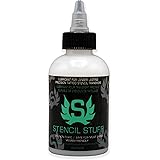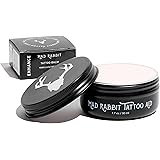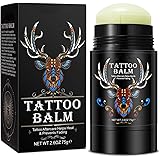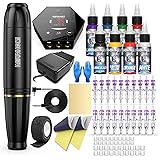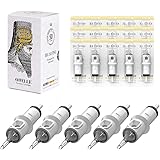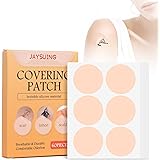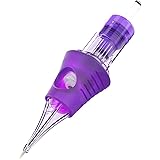The intricate world of lettering is often observed with a blend of admiration and curiosity. As showcased in the accompanying video discussing various types of lettering, the discipline extends far beyond mere handwriting, encompassing a rich tapestry of historical styles, diverse tools, and specialized techniques. For those venturing into or already immersed in the realm of calligraphy and fountain pen artistry, understanding these distinctions is paramount to cultivating mastery.
A common challenge encountered by enthusiasts is differentiating between the myriad styles and discerning which tools are best suited for each. The journey from novice to adept often involves navigating a complex landscape of scripts, nibs, and inks, each presenting its own unique demands and aesthetic possibilities. This comprehensive exploration aims to demystify the core categories of lettering, providing a deeper understanding that complements the visual demonstrations of various lettering styles.
Decoding the Diverse Types of Lettering in Calligraphy
The foundational principles governing calligraphy dictate that the interaction between the writing instrument and the surface, coupled with the practitioner’s control, ultimately defines the script’s character. Within this broad definition, distinct families of lettering have emerged, primarily categorized by the type of nib or brush employed and the inherent characteristics of the strokes produced. These categories, though sometimes fluid, offer a structured approach to comprehending the vast scope of penmanship.
The Elegance of Pointed Pen Lettering
Pointed pen calligraphy is recognized for its graceful contrast between delicate hairlines and robust, shaded downstrokes. This style relies on the flexibility of a pointed nib, which expands when pressure is applied during the downward stroke, allowing for significant line variation. The meticulous control required to achieve consistent hairlines and swells is a hallmark of this sophisticated lettering type.
Styles such as Copperplate and Spencerian scripts epitomize the beauty of pointed pen work, each possessing its own historical lineage and structural nuances. Copperplate, for instance, is characterized by its dramatic thick and thin strokes, flourishing, and an overall rounder, more expansive form. Spencerian, conversely, tends to be lighter, more condensed, and frequently features elegant loops and a flowing quality, often being described as a precursor to modern business handwriting.
Imagine if one were tasked with writing an official document or an ornate invitation; the precision and formal beauty of a well-executed pointed pen script would undoubtedly convey a sense of gravitas and timeless artistry. The continuous development of consistent pressure and release is paramount to mastering these refined lettering styles.
Mastering Broad-Edge Calligraphy
In contrast to the variable line widths of pointed pen scripts, broad-edge calligraphy is defined by the consistent flat edge of its nib, which naturally creates thick and thin strokes based on the angle at which it is held. The pen itself determines the primary stroke width, meaning the calligrapher’s skill lies in maintaining a consistent nib angle and forming shapes that leverage this inherent characteristic. This is often seen as a foundational element of penmanship.
Historical scripts such as Foundational Hand, Italic, and Blackletter (or Gothic) are quintessential examples of broad-edge lettering. Foundational Hand is often recommended for beginners due to its relatively simple forms and emphasis on consistent rhythm. Italic script, with its characteristic slant and elegant ascenders and descenders, offers a balance of formality and fluidity. Blackletter, with its dense, angular, and often intricate texture, evokes a medieval aesthetic and remains a powerful visual statement.
Consider the impact of viewing illuminated manuscripts or historical proclamations; the distinct visual weight and structural integrity of broad-edge lettering styles are immediately apparent. The unique visual texture created by the broad-edge pen is immediately recognizable, contributing significantly to the legibility and aesthetic appeal of the overall composition.
The Fluidity of Modern Lettering and Brush Script
Modern lettering and brush script represent a more contemporary and often less rigid approach to letterforms, though they frequently draw inspiration from traditional calligraphy principles. This category embraces a wider array of tools and allows for greater expressive freedom, making it popular for personal projects, branding, and graphic design. The emphasis is often on artistic interpretation rather than strict adherence to historical forms, allowing for a personalized flair.
While brush pens are a primary tool for this style, fountain pens equipped with flexible or fude nibs can also achieve a similar expressive quality, producing varied line weights based on pressure. Brush script typically features flowing, connected letters with significant bounce and character, often mimicking the look of traditional brush painting. Modern calligraphy, a broader term, encompasses both pointed pen styles executed with a contemporary aesthetic and expressive brush lettering.
Imagine creating a vibrant greeting card or a dynamic logo; the versatility and energy of modern lettering styles offer an endless palette for creative expression. This adaptability ensures that these lettering types remain highly relevant in contemporary design and personal artistry, providing an accessible entry point for many enthusiasts.
The Interplay of Tools and Technique: Beyond the Basics
The choice of writing instrument profoundly impacts the appearance and execution of various types of lettering. For fountain pen enthusiasts, understanding how different nibs interact with paper and ink is crucial. A highly flexible gold nib, for instance, will perform dramatically differently from a rigid steel stub nib, each lending itself to specific lettering styles and expressive qualities.
Stub and italic nibs, with their flattened tips, are ideal for broad-edge calligraphy, naturally producing thick vertical and thin horizontal strokes. Flexible nibs, often found in vintage fountain pens or specialized modern counterparts, allow for the pressure-sensitive line variation characteristic of pointed pen scripts. Furthermore, the flow properties of ink and the absorbency of paper are critical factors that influence how a line is laid down, affecting sharpness, feathering, and drying time, which are all integral to mastering diverse lettering styles.
Cultivating Your Lettering Journey: Practical Insights
Embarking on a journey through the various types of lettering necessitates dedication to practice and a keen eye for detail. Regardless of the chosen style—be it the disciplined grace of Copperplate or the vibrant energy of brush script—foundational principles remain constant. Attention to letterform construction, consistent spacing, and the rhythm of stroke production are universal elements that underpin all successful lettering endeavors.
It is recommended that one systematically studies exemplar alphabets, meticulously observing the nuances of each letter’s anatomy, including x-height, ascender and descender lengths, and serifs or terminals. Experimentation with different fountain pens, nib grinds, and ink formulations is also invaluable in discovering what tools best complement one’s personal style and physical ergonomics. The continuous refinement of technique, coupled with a deep appreciation for the history and artistry of lettering, will undoubtedly lead to a rewarding and skillful practice.



